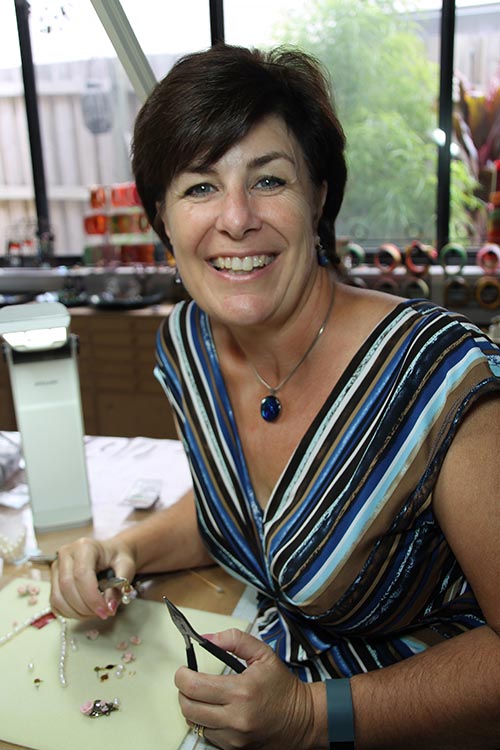I have really exciting news to announce. If you follow me on Facebook , you've already got the heads up, but for my blog readers I must make an apology for not letting you know sooner. I didn't mean to neglect you but you see, I've been just a little busy over the past few months creating concept designs and putting together a book proposal. And the exciting news is that the publisher has accepted my proposal and contracts have been signed. So in a nutshell, I'm writing my first jewellery making book. How exciting is that! So over the coming months I'll be pouring my heart and soul into this book. It will be a busy time with lots of projects being created, text being edited and oodles of step-by-step photographs being taken. I wish I could tell you more about the contents of the book but those details are still under wraps. What I can tell you though is that the jewellery techniques will take you where no other jewellery making books have taken you before and th...
Tuesday, May 28, 2013
It's Official... I'm writing a book!
Wednesday, May 22, 2013
Jewellery Tip - Sorting different sized crimp tubes
Like many designers in the craft industry I share my studio with a pet. Most of the time Kitty Kat is just happy to nap and occasionally she'll chase a bead or other embellishment that has fallen on to the floor. But it doesn't always go like that. Today we had a little incident when she jumped up on to the bench top. She landed awkwardly on top one of my boxes of findings, became unbalanced and then she and the findings tumbled unceremoniously onto the floor. Apart from darting out of the studio terrified with her tail between her legs, she was unscathed. But sadly the same can't be said about the 3 drawer box which broke and sent the contents scattering everywhere. Fun! If you've ever had beads or findings scatter across the floor before then you'll know that the easiest way to clean them all up is to grab the vaccuum, wrap a stocking over the nozzle and secure it with a rubber band. It makes gathering all the findings easy. Now all that's left to ...
Tuesday, May 14, 2013
A Ray of Sunshine - My Yellow Bead Drawer
Everyone has a system for organising their bead stash whether it be by colour , shape , type , or material , and it's usually influenced by the way they design and the kind of jewellery they make. For me, I like to keep my go-to beads organised by colour - these are the beads that support the main element or focal point of the design. I also have a separate storage areas devoted to just crystals, one to pearls and gemstones, another to resin/acrylic/plastic, and yet another to large holed beads. There are of course more.... but you get the idea. This system works well for the way I design. But recently, I was looking through my bead collection and noticed a glaring gap in the rainbow of colours that makes up my bead stash: I have practically no yellow beads! I keep my beads organised using the Best Craft Organizer furniture system which I can customise to suit my needs. Yellow is such a cheerful and uplifting colour. It sings with happiness. And whilst it can be a b...
Monday, May 6, 2013
How to Make Eye Pin Loops - the "glue" that connects your jewellery together
If you've ever had a necklace or bracelet catch on your clothes and pull a thread (or catch in your hair...OUCH!), it's probably because there is a loop that hasn't been closed properly. But catching on your clothes and pulling your hair is not the worst of it... Poorly closed loops eventually manage to unhook from the other components they're connected to and then your jewellery falls apart. Arrggghh! When you close your loops tightly, your jewellery looks polished and professional. And the bonus is... It won't catch on your clothing or your hair ever again . What is a Simple Loop in Jewellery Making? Simple loops, or loops, are used to connect one element of a design to another, like a beaded link or a dangle. They can also be used in place of a jump ring in some designs. Simple loops aren't soldered, so it's essential that they're completely closed; otherwise, components work themselves loose and unhook from each other. Poorly closed loops = brok...
Subscribe to:
Posts (Atom)







